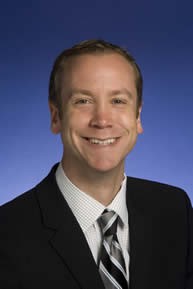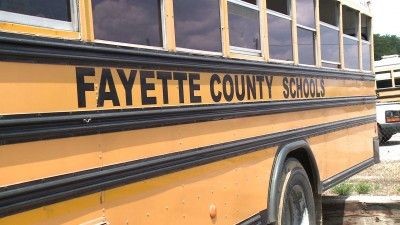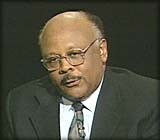Ask almost anyone about Shelby County’s two school systems and they’ll tell you the same thing: The Shelby County Schools (SCS) are growing at an unbridled pace and desperately need new schools. The city schools, on the other hand, are losing students and closing facilities.
But neither of these assessments is completely true.
According to figures from the Tennessee Department of Education, SCS’ population remained fairly stable for the past decade while the population of Memphis City Schools (MCS) grew by roughly 10,000 students.
In 1995, the county schools served 43,800 students. Despite that figure spiking to almost 49,000 in 1999, it was down to 45,000 in 2005. Over those 10 years, MCS’ population went from 108,000 students to 118,000.
“We have some years where we’ll have 3,000 students annexed by the city and we’ll still have growth of new students at our other schools,” explains Maura Black Sullivan, assistant superintendent of planning and student services at SCS. “City school enrollment has been declining slightly each year, and then they’ll have growth with the annexations.”
But the bottom line is: The overall net growth for both school systems was about 11,000 students during the past decade.
During that same time period, MCS built 22 schools and SCS built 15 new schools. (The two systems also jointly built Cordova High School.) Based on allowable students-per-classroom size, the city’s new schools could serve 20,000 students. In the county, those 15 schools could serve almost 16,000 students.
And if those numbers aren’t interesting enough, try these: American Way Middle cost $24 million to build. Craigmont Middle cost $25 million. Germanshire Elementary cost $14 million. Hickory Ridge Elementary cost $15 million. Lakeland Elementary cost $8 million. Bailey Station Elementary cost $12 million. And Mitchell High cost about $14 million. That’s seven randomly selected, newly built schools and over $100 million in construction costs.
In the multimillion-dollar game of school-construction funding, the issue of annexation complicates the issue. But the core question is clear: If only 11,000 students were added to Memphis and Shelby County schools in the past 10 years, why did the two school systems combine to build 38 new schools capable of housing 36,000 new students at a cost of hundreds of millions of dollars?
The Exchange
Each annexation is different. And, until recently, the school systems were rarely consulted when the city of Memphis decided to annex an area.
“At times, we annexed a population but not the facilities designed to accommodate that population,” says city councilman Tom Marshall, who also serves as a consultant for the city school system. “When that happens, we have lessened the overcrowding burden of SCS but greatly increased the burden that MCS must endure.”
In other situations, annexed areas may remain in litigation for years, such as the case of Hickory Hill, but then suddenly be decided in court. The main problem, however, may lie within the changing system populations and school construction.
“It’s really hard for each school system to propose construction projects in areas of flux because they require large public-capital dollars that we’re asking to expend speculatively,” says Sullivan. “You don’t know how many kids are going to be in each system and who’s going to need what when.”  Maps courtesy of the Memphis and Shelby County Division of Planning and Development
Maps courtesy of the Memphis and Shelby County Division of Planning and Development
Each gray dot represents an actual student.
City school board member Deni Hirsh originally ran for office to represent the people living on the edge of the city. “Most of the community … doesn’t know that the boundaries are hither and thither. It’s crazy, and it creates major confusion and conflict between the two systems.”
Cordova High was built in 1997 under an agreement that the school would serve students from county and city schools for 12 years. The county operated the facility for the first seven years before transferring authority to the city in 2004. Cordova High becomes solely an MCS facility after 12 years.
“It would have been fiscally irresponsible to build two high schools at the same time,” says Hirsh. “It’s not a perfect solution, but it was the best solution available.” But because the population in the area continues to grow, Hirsh thinks the students who live there are in danger of not being served.

In an interesting arrangement, Chimneyrock is currently run by SCS, while Cordova High is operated by MCS.
“The county school system doesn’t want to build in those areas because they know we’re going to take them over,” she says. “The county schools don’t want to build there and we can’t build there yet.”
David Pickler is the county school board chairman. He says the county system does put resources into the Memphis annexation reserve area — citing the new roof the district is putting on Chimneyrock Elementary — but that if annexation wasn’t part of the equation, the district would do things differently.
“If we could coordinate where schools need to be constructed, based on population trends, based on developments that have been approved,” he says, “I think it would allow for a far more efficient situation.”
Generally, the two districts have been willing to work together — sharing the cost for schools such as Cordova High or agreeing to continue serving students for a set period after an annexation — but that doesn’t mean they always will. And in a game where the stakes are high — and the dollars even higher — students are the unwilling pawns.
The Gambit
Last May, just as students were looking forward to summer vacation, the parents of 155 SCS students got a shock: The city of Memphis decided to annex commercial property in the Southwind area. Two apartment buildings were in the annexed property. SCS told the families living there that, effective in August, their children would be going to Memphis City Schools.
“We just thought it was amazing,” says parent Rod Merriweather, himself a product of MCS. “It wasn’t the annexation itself. It was that particular portion — that anyone who lived in those apartments was annexed immediately and wouldn’t be able to attend Germantown (SCS) schools anymore.”
But, by annexing commercial property, the city was trying to leave residential areas — and students — in the county.
“We didn’t have a school down there,” says Michael Goar, MCS chief operations officer. “We’d have to bus those kids, so we asked SCS to let the kids in 10th and 11th grade graduate [from Germantown High].”
The county school board wasn’t interested. A few weeks before, MCS officials had backed out of an agreement between the school districts, deciding not to support legislation allowing the creation of special school districts.
“That spirit of cooperation suffered a serious blow after they said they would not support us,” says Pickler. “To come back two weeks later and say, ‘Oh, by the way, we want you to help us out.’ I’m sure you can imagine our board was reluctant, at best, to extend an olive branch after they had bitten our hand.”
Pickler says they possibly would have reconsidered, but instead of forcing the stalemate, city government decided to postpone the annexation.
“The school board essentially abandoned those students,” says Merriweather. “They’re always talking about ‘we’re here for the students; there’s no hidden agenda; our first priority is the students.’ Well, that changed really quickly.”
The Deflection
“I’ve had people say to me that 10 years ago your enrollment was 47,000 and today it’s 47,000, so you don’t have any growth,” says SCS’ Sullivan. “Sure, but I lost about 12,000 kids and I gained them right back. If that’s not growth, I don’t know what is.”
Sullivan explains that the district is so spread out that while there may be room for students at an elementary school in the northwest area of the county, bussing them from the crowded southeast area would take 45 minutes. She says she also tries to keep neighborhoods together and children who went to the same elementary and middle schools.
“You can do a little bit here and there, but you can’t just go down the middle of a street and say, ‘Sorry, but you kids go here and you kids go there,” she says. “I don’t think that’s good for the community.”
The same goes for available spaces in the city system. “We have a large concentration of inner-city schools with available desks,” says Marshall. “Unfortunately, the school-aged population is more concentrated in the eastern portion of the city. If we think it’s acceptable policy to bus them into town, we have the room for them. Between the cost of transportation and the condition of those [inner-city] facilities, we think it’s best in the long run to build new schools in those neighborhoods.”
But there is also the question of the larger community. The state-mandated average daily attendance (ADA) funding formula — an equation that means $3 to MCS for every $1 to SCS and vice versa — has often been cited as the main driver of county-government debt. If SCS wants to build a $20 million school, the county must allocate $60 million to the city schools, bringing the total cost up to $80 million.
Two years ago, during one of the many skirmishes on re-working the funding formula, county mayor A C Wharton began the Needs Assessment Committee (NAC). The committee’s job was to make sure the school systems weren’t over-paying for new construction or capital improvements and that what they were building were actually needs instead of wants.
“All we’re trying to do is ask the tough questions and help them and everybody in this community deliver the best product we can,” says committee head Scott Fleming, an architect.
And though the all-volunteer NAC is strictly an advisory body, it is perhaps the only tool the county has to assess school construction.
“It’s a very complex issue. There are so many needs out there,” says Fleming. “The county’s needs are different from the city’s. They have so many portable classrooms out there. The city has portables, too, but … the city’s needs mainly deal with deferred maintenance.”
To add confusion to the issue, each district calculates its capacity differently. SCS uses an average of 15.625 children for every elementary school class, 18.519 for middle, and 20 for high school. In contrast, the city system uses slightly higher capacities: 20 students per class at the elementary level, 23 for middle, and 25 for high school.
“What does it mean that you’re over capacity?” says MCS’ Goar. “We use a higher factor: Is their overcrowded not as overcrowded as our overcrowded?”
Sullivan at the county schools says the numbers come out roughly the same. “We count every room in the building and then do a small number factoring on those rooms,” she says. “With the growth in our system, we sometimes have to tear down a science lab or a music or art room and turn it into a classroom. What we’re trying to do is — based on the number of classrooms in a building — how many kids can actually fit?”
When a school needs extra space, music rooms and the like will be converted to classrooms before the system adds portables. MCS, on the other hand, does not include specialized spaces in its capacity equation. While most people familiar with the situation say it’s not an apples-to-apples comparison, it’s unclear how close the numbers actually are. And the NAC’s Fleming says it’s not the committee’s job to interfere with what educators think is best.
“One thing we don’t have any input in — and don’t want to have any input in — is their educational program. It’s not up to us to say you need to provide this program or that program or you need to provide a class of no more than 20 students,” says Fleming. “As long as what they’re proposing is within acceptable norms, then it’s not up to us to judge if they’re putting too many or not enough children in a classroom.”
The NAC is in the process of hiring the DeJong company, an education consulting firm that has worked with school systems in Arkansas and Detroit, to do a more comprehensive survey of the needs of both systems.
“We design schools, but these issues are so much more complex than designing a school,” says Fleming. “We need somebody like DeJong that has this level of expertise to help us weed through it and figure out what is the best thing for the city and the county collectively.
“This will allow us to do our job better … and tell us, ‘Hey, this system is saying this, and we think you might reconsider this.'”
Endgame
But as it stands, each school district has a large amount of freedom.
Last spring, the school districts broke ground on a $49 million joint high school, Southwind High. But about six months before that, the city/county office of planning and development (OPD) released a draft study of the school plan. The study, requested by county government and MCS, looked at enrollment figures of nearby high schools: MCS’ Kirby was 153 students under capacity; SCS’ Germantown was 85 under; SCS’ Houston was 165 under; and Collierville was 352 over.
Which meant that, using the net capacity of both systems, the overall area was only 79 students over capacity.
“They were about 80 students over, which is basically at capacity,” says Louise Mercuro, deputy division director of the Memphis and Shelby County Division of Planning and Development at the time and now the director of capital planning for MCS. “In our minds, they could have redistricted and that would have helped.”
Instead the systems decided to build a 2,000-student high school together as part of a larger funding agreement wherein they would bypass ADA.
“There was also a question if the system needed a school with a capacity of 2,000 students,” says Mercuro. “That area will be annexed very quickly.”
While the county regularly builds 2,000-student high schools, the city’s are often much smaller. And because the school is within the Memphis annexation area, it will eventually become a city school. But that’s not the only reason OPD was skeptical of the size.
The report concludes that the Collierville and Houston zones outside the annexation reserve area will experience steady growth, but growth in the portion of Houston’s zone that is part of the reserve area will level off once the area is annexed. Growth in the Kirby zone is also expected to be flat.
“The result of this analysis is that the recommended size of the new high school should probably be somewhat less than 2,000 students,” reads the report. “A smaller school could be accommodated on 30 acres or less. … A 2,000-student facility could be accommodated on 50 acres of land.”
The study was never finalized and never presented to the County Commission. SCS’ Pickler says he saw it, but that it didn’t give him pause because OPD’s study may have had a political agenda.
“Our numbers are not written with any political bias and the numbers simply demonstrate that it needed to be built,” he says of the school.
But there are perhaps other reasons why the school was built.
During discussions over zoning shifts for other schools in the area, parents have questioned whether race is a motivating factor for the changes. Students from Highland Oaks Elementary, which was almost 90 percent African American, were recently moved to a former Schnucks store facility.
For the 2004-2005 school year, Germantown High was almost 55 percent black, 40 percent white, and 5 percent other. Houston High was 74 percent white, 18 percent black, and 8 percent other.
The demographics of Southwind High cannot be determined yet, because the attendance zones have not been drawn. However, SCS’ Sullivan says that the demographics will probably be similar to those of Highland Oaks Elementary or Southwind Middle, which was 9 percent white and 87 percent black.
Another question is the site of the school, a 62-acre parcel at the corner of E. Shelby Drive and Hacks Cross, 12 more acres than OPD thought was needed for a 2,000-student facility.
In OPD’s study of the school, it addressed all three possible sites and noted that site 1 — the site eventually chosen — did not have sewer facilities, meaning additional construction dollars. The study also observed that 10 acres included in the acquisition had been sold in 2004 for $21,500 an acre. When the school systems bought the land, it cost them an average of $84,000 an acre for 62 acres.
A majority of the land was bought from a group that includes Charles Askew. The smaller chunk — about 12 acres — was bought from a group that includes developers Terry & Terry, which is now working on a subdivision on the land just west of the school.
“For 20 years, every decision they’ve made has been based on developers and spurring on development,” says Tom Jones, former public-affairs director and senior adviser to then-county mayor Jim Rout and now a consultant for Smart City Consulting. “There are school sites chosen over the years that were just put out in the middle of a field.”
For many years, local developer Jackie Welch seemed to have almost a monopoly on the county schools, often selling the district property for a school and then developing homes around it.
So while development drives school construction, school construction drives development. MCS’ Hirsh says she sees signs for neighborhoods boasting great county schools and no city taxes. “The fact that the community allows developers to advertise that way adds to the perception that living inside the city is a bad thing,” she says.
And sometimes, with annexations right around the corner, residents may not know the whole story.
“Developers find they can sell a home when they say you’re going to Shelby County Schools and you’re going to pay Shelby County taxes,” says Pickler, “irrespective of the fact that one day it’s going to be a city school. … It’s kind of a bait-and-switch type situation.”
But home-buyers are not the only ones caught in the trap.
“The county mayors have all said the same things: One, these sites aren’t being made in the wisest way. Second, a lot of influences over decisions made we don’t understand. We’re the government supporting the county schools and yet a lot of decisions are made contrary to our best interest,” says Jones.
“I think, by and large, the political leaders are sincere about education, but they have to make decisions in a political context where they get pressure from developers, from suburban voters, from taxpayers, and we end up having a political conversation,” he says. “It really needs to be elevated to a different level.”
In the meantime, SCS is in the process of finding another parcel of land in the Southwind area to build a K-8 school.
Checkmate
Because of annexations in 2002 and 2006, respectively, students in Countrywood and Berryhill are supposed to attend MCS at the beginning of the next school year.
“My first problem,” says MCS’ Goar, “is that we’re only getting Chimneyrock Elementary. It’s a K-4 school, and it already has 1,100 kids and 14 portables.”
Not only does MCS not have any other K-4 schools, it simply doesn’t have room for the 2,500 students it expects to gain next fall. While high school students will attend Cordova, there are no middle schools in either Countrywood or Berryhill.
“Where will they go?” asks Goar. “It doesn’t make any sense, and it doesn’t take the kids into account. … We are inheriting that problem, but we’re not inheriting the solution.”
With less than a year to figure it out, the NAC recently sent a letter to the City Council, asking them to move up the Bridgewater annexation to December 31, 2006. The Bridgewater area includes “the Dexters,” an elementary and a middle school that are crucial for serving students in the nearby area.
“MCS does not have the capacity to serve these children at the present time,” says Fleming. “Schools in this area of the city — particularly the elementary and middle schools — are all at or over capacity. Students would have to be served by either the addition of more portable classrooms or transporting them considerable distances from their homes.”
While adding the Dexters would help, the larger question of upcoming annexations looms. Many people interviewed suggested possible solutions to the larger problem of annexation and school construction, but most are a little controversial. A joint building authority could be created to build all the schools. Consolidation of either the governments or the school systems would eliminate future annexations.
Goar suggests giving the city schools jurisdiction over the Memphis annexation reserve areas now, meaning they would take the students, the schools, and the responsibility for building facilities in the areas that will be theirs one day anyway.
“We don’t control our destiny. Our job is somehow to make sure we meet students’ needs,” he says.
Pickler has a similar idea, saying that the boundaries of the two districts should be frozen into two special school districts. He doesn’t know where the boundaries between the two districts would be, but each would have taxing authority. Either way would alleviate the confusion over which district should be building a school in a certain area.
“If the two boards could come together for some sort of structure where we set the boundaries, that would allow both systems to coordinate and build schools where there truly is a need and not necessarily just because of where the boundaries are,” says Pickler. “If we had a situation whereby we were able to have a comprehensive plan for school infrastructure, I think the taxpayers could save literally hundreds of millions of dollars.”





 Maps courtesy of the Memphis and Shelby County Division of Planning and Development
Maps courtesy of the Memphis and Shelby County Division of Planning and Development 